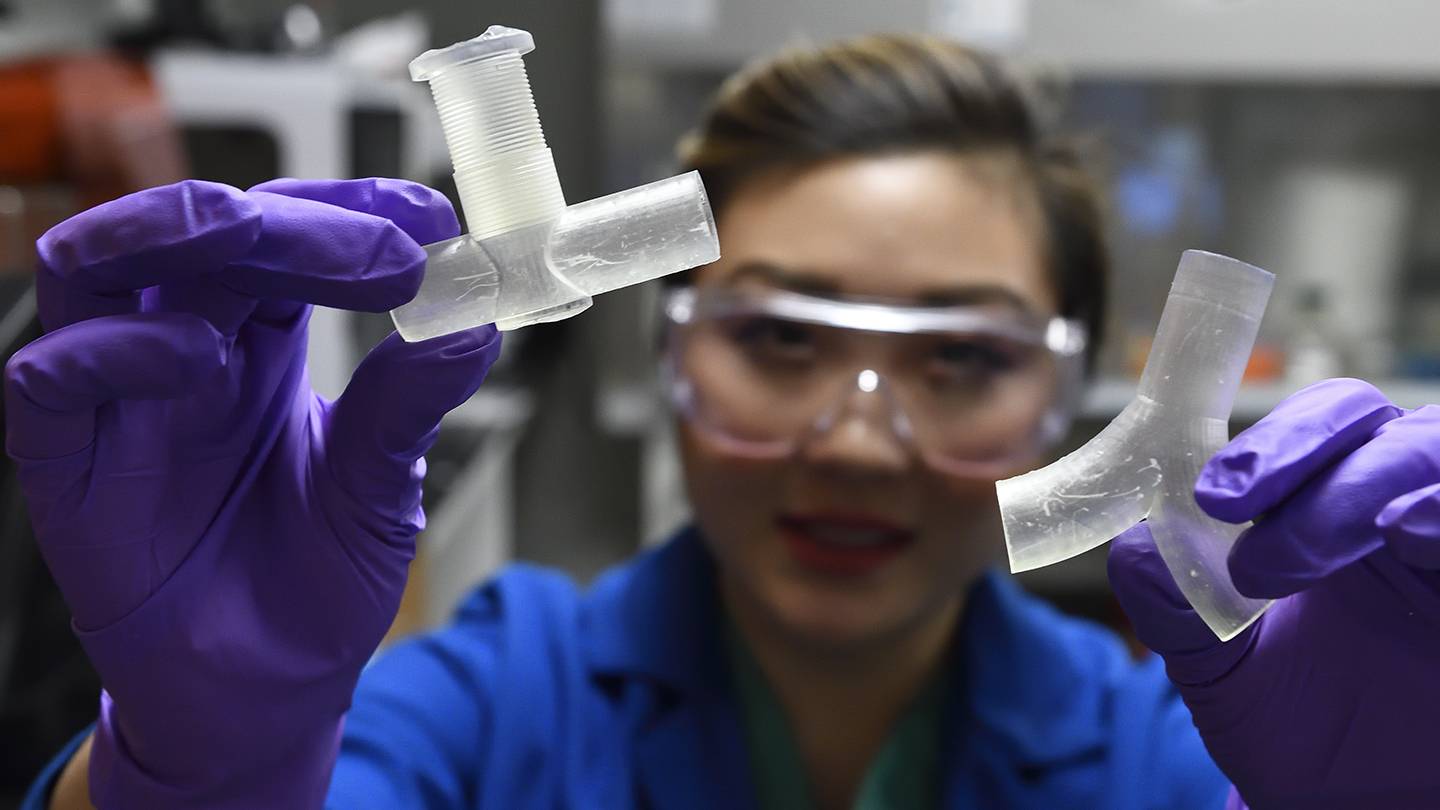Press Release
Two Ventilator Concepts Emerge From Design Thinking Workshop Led by Johns Hopkins APL
Experts from across the Johns Hopkins enterprise gathered virtually on March 25 to discuss ways to address the projected shortfall in ventilators required during an anticipated surge of critically ill COVID-19 patients.
In a design thinking workshop led by the Johns Hopkins Applied Physics Laboratory, myriad ideas came to the fore — many of which were already percolating among separate groups. Two concepts are now the focus of a cross-university effort to prototype ventilation approaches, and a Ventilator Systems Engineering Team (VSET) — a group of experts from across the Hopkins enterprise — was established to review the designs from a systems engineering perspective.
“The workshop provided a forum to get ideas out on the table and to draw expertise from across the university,” said Alan Ravitz, the chief engineer of APL’s National Health Mission Area and a member of the VSET.
Each concept tackles this challenge differently. One involves a 3D-printed design to enable multiple patients to be treated by one ventilator, and the other utilizes an unconventional ventilation approach driven by pressured gas. Both ideas, led by teams from the Johns Hopkins Whiting School of Engineering, are undergoing prototyping and testing.
The team developing the 3D-printed ventilator splitter says its design addresses concerns about the safety and effectiveness of sharing ventilators.
“There is an emphasis right now on using engineering to develop open-source solutions to many aspects of the COVID-19 crisis, but especially for ventilator design and production,” Sung Hoon Kang, an assistant professor of mechanical engineering at the Whiting School, said in the press release from JHU. Kang is leading a team that includes ICU intensivists and pulmonary specialists at the Johns Hopkins School of Medicine.
“One approach is to use one ventilator to treat multiple patients,” Kang said. “While this is feasible, it must be safe for all the patients. That means ensuring that each patient gets the care they need, without shortchanging anyone. This is what we set out to create.”
That is not dissimilar from the challenge facing the team designing the unconventional ventilator. It’s working with multiple manufacturing and safety contingencies in mind — minimizing the number of parts needed, selecting only components available in quantities of more than 10,000 from national distributors, and utilizing specific parts that have high reliability and can be manufactured on a large scale. The design is meant to allow the ventilators to operate off of pressurized air and oxygen lines already available in emergency rooms, or from simple pressurized gas sources in the field.
“Our goal is mass production,” said Nick Keim, the deputy director of the Whiting School’s Energetics Research Group, which is where his group’s prototypes are currently being tested. “Reliability and large-scale manufacturability are two critical components; the other is simplicity to keep the cost low. If it isn’t required to treat acute respiratory distress syndrome of COVID-19 patients then it isn’t part of our design.”
All of what Keim describes is admirable, and integral to provide what would be a greatly needed infusion of the machines into the health care system. But what matters most, of course, is safety.
“The biggest challenge, as I see it, to all projects seeking to make a difference during this crisis, is time,” he said, noting production scale and FDA emergency use authorization are additional hurdles. “We need to develop these systems yesterday, but we need to make sure they are safe.”
One of the core responsibilities of the VSET, Ravitz explained, is examining the safety associated with these concepts.
“We’re working hand-in-glove with the teams to understand what their designs are, looking for any potential risks they may pose, and advising on how to mitigate those risks,” Ravitz said. “We’re taking a systems engineering perspective to help the teams quickly identify and answer questions like: what kinds of alerts and alarms should be built in? What does the workflow need to be? How would a respiratory therapist need to use it in collaboration with critical care? In this way we can inform how they should be built and used.”
As the COVID-19 pandemic continues, Maryland health officials offered a hopeful projection in a press conference last week that, based on some models, the state is nearing a potential late-April peak in cases. Regardless, the teams’ work continues apace.
“The goal here is to quickly get this technology to hospitals around the world,” Helen Xun, a member of the 3D splitter team and a third-year medical student at the Johns Hopkins School of Medicine, said in the JHU press release. “Right to the people who need it the most.”
